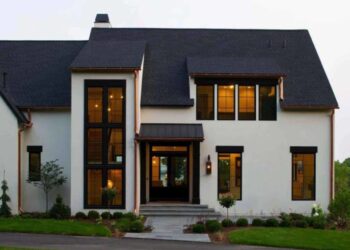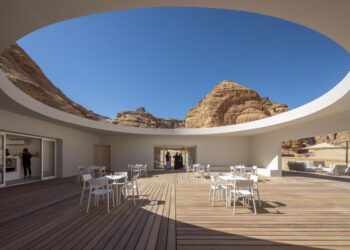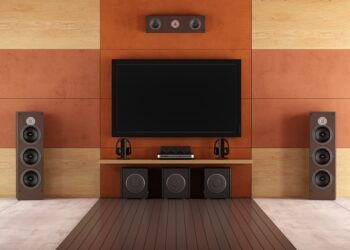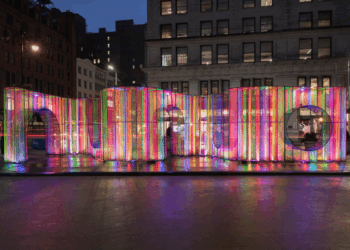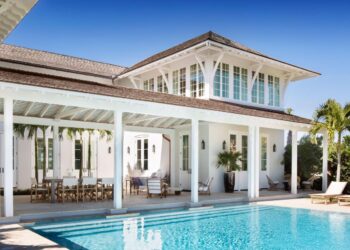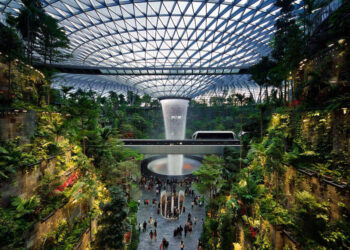In an increasingly urbanized world, where concrete dominates and horizontal space becomes a premium, humanity’s innate yearning for nature finds an innovative answer: vertical gardens. More than just aesthetically pleasing green walls, these living installations are transforming barren facades into vibrant ecosystems, bringing the restorative power of nature into dense urban environments, homes, and offices. This isn’t merely a decorative trend; it’s a profound revival of green living, offering a multitude of environmental, economic, and well-being benefits that are reshaping sustainable design. Vertical gardens are proving to be a revolutionary solution for enhancing biodiversity, improving air quality, and cultivating a deeper connection to nature in places where it’s desperately needed.
The Call for Green
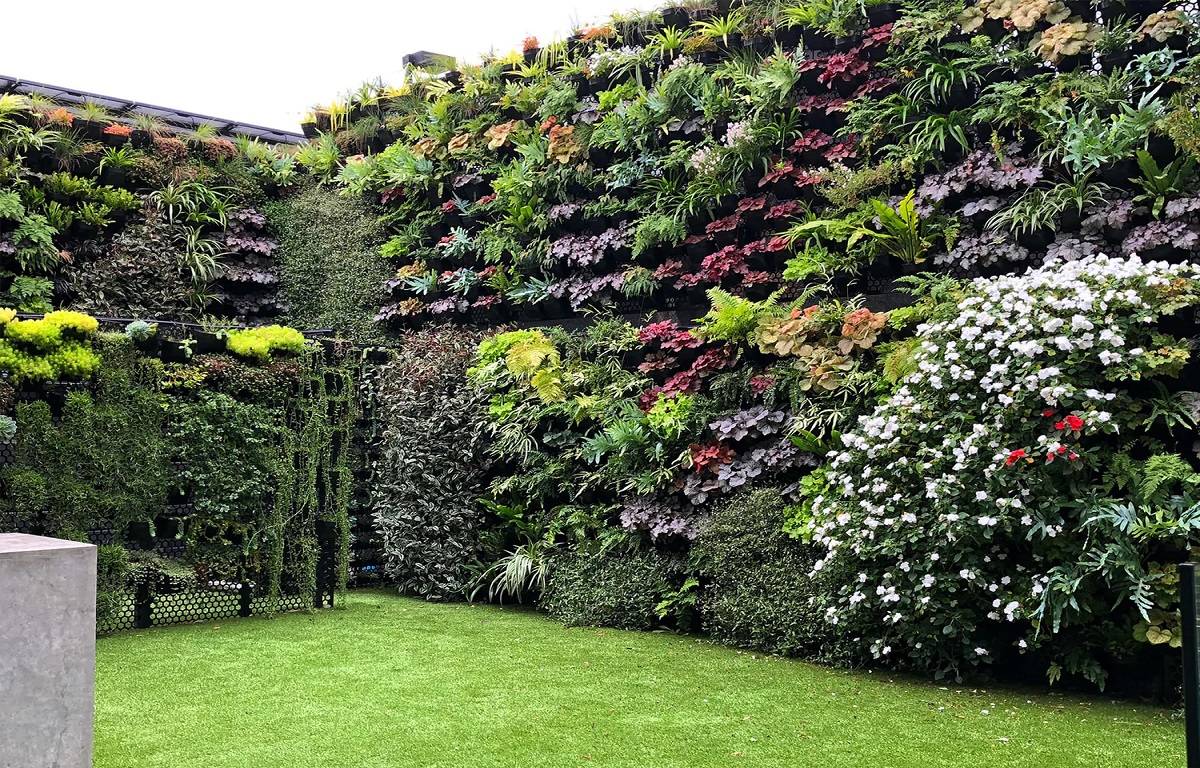
The exponential growth in popularity of vertical gardens is a direct response to the pressing challenges posed by modern urbanization and an increasing awareness of environmental and human well-being.
A. Urbanization and Space Constraints:
A. Decreasing Green Space: As cities expand upwards and outwards, traditional horizontal green spaces (parks, gardens) become scarce. This leads to a significant reduction in biodiversity and natural recreational areas, limiting crucial opportunities for urban dwellers to connect with nature.
B. High Density Living: Urban dwellings and commercial buildings often have limited or no access to ground-level green areas. Vertical gardens offer an ingenious solution to introduce greenery where horizontal space is constrained, transforming otherwise unused vertical surfaces into vibrant ecosystems.
C. Concrete Jungle Effect: Extensive concrete and asphalt surfaces in cities absorb and radiate heat, contributing to the Urban Heat Island (UHI) effect, which makes cities significantly hotter than surrounding rural areas. This increased heat intensifies energy consumption for cooling and negatively impacts human comfort.
B. Environmental Imperatives:
A. Climate Change Mitigation: Plants absorb carbon dioxide (CO2), a primary greenhouse gas, and release oxygen through photosynthesis, playing a crucial role in mitigating climate change. Vertical gardens effectively increase the green footprint of urban areas, contributing to carbon sequestration and helping to offset emissions.
B. Air Quality Improvement: Urban air is often polluted with particulate matter (PM2.5, PM10) and harmful gases (e.g., nitrogen oxides, sulfur dioxide) from traffic and industry. Plants act as natural biofilters, trapping these pollutants on their leaf surfaces and absorbing some gases, significantly improving local air quality for residents.
C. Stormwater Management: Green walls can absorb and filter rainwater runoff, reducing the volume and velocity of water entering urban drainage systems. This mitigates localized flooding, reduces the burden on aging infrastructure, and helps replenish groundwater supplies.
D. Biodiversity Loss: Urban development often leads to habitat destruction and fragmentation, threatening local flora and fauna. Vertical gardens, especially those designed with native plant species, can create vital micro-habitats for insects, pollinators (like bees and butterflies), and other small urban wildlife, fostering biodiversity in otherwise barren environments.
C. Human Health and Well-being:
A. Biophilia: Our innate human tendency to connect with nature, a concept known as biophilia, is increasingly understood as a fundamental biological need. Exposure to plants and natural elements has been scientifically proven to reduce stress, lower blood pressure, and improve mood, contributing to overall psychological resilience.
B. Mental Restoration: Views of nature, even when viewed passively through a window, can reduce mental fatigue and improve cognitive function, attention span, and creativity. Vertical gardens offer a constant source of this restorative visual stimulus, crucial for combating the cognitive drain of urban life.
C. Improved Air Quality: Cleaner indoor air, thanks to the filtering action of plants, directly reduces respiratory issues, allergies, and the symptoms associated with “sick building syndrome,” common in sealed, modern buildings with poor ventilation.
D. Aesthetic Appeal: The inherent visual beauty of living walls enhances the aesthetic quality of buildings and spaces, transforming dull facades into vibrant, dynamic, and visually stimulating features that are enjoyable to behold and inhabit.
Designing and Building Vertical Greenery
Creating successful and sustainable vertical gardens involves understanding specific horticultural, structural, and irrigation principles that differ significantly from traditional ground-level gardening. It’s a complex interplay of engineering, botany, and design.
A. Structural Systems and Support
The fundamental framework that ensures the stability, safety, and longevity of any vertical garden, crucial given the weight of plants and water.
A. Modular Panels: These are the most common and versatile systems.
A. Tray Systems: Individual plant trays or pre-planted cartridges are inserted into a modular frame system. These allow for easy plant replacement, rearrangement, and maintenance, as trays can be removed independently.
B. Pocket Systems: Fabric pockets (often made of durable, recycled felt) or rigid plastic modules are directly attached to a wall or a supporting frame, into which plants are directly planted. Fabric systems offer good aeration, while plastic systems provide more rigidity.
C. Grid Systems: A lightweight framework of mesh or wire is attached to the wall, serving as a trellis that allows climbing plants to grow and eventually cover the entire surface. This system relies more on the plants themselves for coverage rather than pre-grown modules.
B. Hydroponic/Aeroponic Systems: These are more advanced and water-efficient systems where plants grow without traditional soil.
A. Hydroponic: Plants are rooted directly in an inert growing medium (like rockwool or coco coir) and receive nutrients through a circulating, water-based solution.
B. Aeroponic: Plants are suspended in the air, and their roots are periodically misted with a nutrient-rich solution. These systems are highly efficient in water and nutrient use but require precise control.
C. Freestanding vs. Wall-Mounted: Vertical gardens can be directly mounted to a building’s facade (requiring a thorough structural assessment and careful waterproofing) or be self-supporting, movable structures that offer greater flexibility in placement and design.
D. Weight Load and Drainage: These are critical engineering considerations. Systems must be meticulously engineered to support the combined weight of plants, growing media (which can be substantial when wet), and circulating water. Efficient drainage systems are paramount to prevent water accumulation, leaks, and potential water damage to the building structure or adjacent areas. This often involves multiple layers of waterproofing and specialized drainage channels.
B. Irrigation and Water Management
Efficient and consistent water delivery is vital for plant health, especially in vertical systems where gravity plays a role, and for conserving water resources.
A. Drip Irrigation: The most common and highly efficient method. It delivers water and nutrients precisely and slowly directly to the plant roots through a network of emitters, minimizing evaporation, runoff, and overspray. This method is often integrated directly into the modular panel system.
B. Recirculating Systems: Common in hydroponic and larger vertical gardens, these systems collect excess water that drains from the plants, filter it, and then pump it back up to irrigate the plants again. This significantly reduces water consumption, making them highly sustainable.
C. Automated Systems: Integrating smart timers, moisture sensors, and sometimes even weather-responsive controls to automate watering schedules. This ensures plants receive the optimal amount of water based on their specific needs, environmental conditions, and time of day, preventing over- or under-watering.
D. Water Quality: Ensuring the irrigation water is of appropriate quality, free from excessive salts, chlorine, or other harmful chemicals that could damage plants or clog irrigation components over time. Water testing and filtration may be necessary.
C. Plant Selection and Horticulture
Choosing the right plants for the specific environment is the most crucial biological aspect for the long-term success and vibrancy of the vertical garden.
A. Light Requirements: Selecting plants appropriate for the exact available light conditions (full sun, partial shade, low light, or artificial grow light supplementation). This is paramount for plant survival and healthy growth in a vertical orientation.
B. Climate Compatibility: For outdoor installations, choosing plants that are hardy and can thrive in the local climate’s temperature extremes, humidity levels, and wind exposure. For indoor installations, selecting plants that adapt well to controlled indoor environments.
C. Root Systems: Selecting plants with non-aggressive, fibrous, or shallow root systems that are suitable for vertical growing media and will not damage the system’s integrity or surrounding structures.
D. Maintenance Needs: Considering the ongoing maintenance requirements (frequency of pruning, pest control, nutrient feeding) when selecting plant species. Some plants require much more intensive care than others.
D. Growing Mediums
The material that supports plant growth in a vertical system, which is typically much lighter and more structured than traditional garden soil.
A. Felt/Fabric: Porous fabric pockets or sheets are a common medium, retaining moisture and allowing roots to breathe while remaining lightweight.
B. Rockwool/Mineral Wool: Inert, sterile, porous fibers derived from basalt rock and recycled slag. They retain water and nutrients exceptionally well, commonly used in hydroponic and aeroponic systems for precise control.
C. Coco Coir/Peat Alternatives: Sustainable, natural fibers derived from coconut husks, offering excellent aeration, water retention, and a neutral pH. They are a more environmentally friendly alternative to peat moss.
D. Lightweight Substrates: Specialized lightweight granular or fibrous media (e.g., expanded clay pebbles, perlite, vermiculite, pumice) that provide physical support, good drainage, and nutrient delivery without adding excessive weight to the vertical structure.
The Flourishing Applications of Vertical Gardens
Vertical gardens are being integrated into diverse settings, transforming environments and delivering tangible benefits across various sectors.
A. Residential Spaces
Bringing nature’s serenity, beauty, and functionality directly into personal living areas, even in the most compact urban dwellings.
A. Indoor Feature Walls: Creating stunning living art pieces that serve as a focal point in living rooms, dining areas, or entryways. These enhance aesthetics, introduce vibrant color and texture, and actively purify indoor air, contributing to a healthier home environment.
B. Kitchen Herb Gardens: Small, modular vertical systems installed in kitchens provide fresh, easily accessible herbs and greens year-round. This promotes healthy eating, reduces food waste, and offers a delightful farm-to-table experience right at home.
C. Bathroom Oasis: Adding vertical plants in bathrooms can enhance humidity, purify the air, and create a spa-like, tranquil, and refreshing atmosphere, transforming a functional space into a relaxing retreat.
D. Balcony/Patio Greenery: Maximizing green space on small urban balconies or patios. Vertical gardens allow residents to create a lush outdoor retreat or a compact vegetable garden, even with very limited horizontal area, providing a vital connection to the outdoors.
E. Privacy Screens: Outdoor vertical gardens can serve as natural, aesthetically pleasing privacy screens between apartment units, from street views, or to soften unsightly views, providing both visual and acoustic buffering.
B. Commercial Offices and Workplaces
Enhancing employee well-being, boosting productivity, improving air quality, and projecting a progressive corporate image.
A. Lobby and Reception Areas: Creating dramatic, inviting first impressions that instantly communicate a company’s commitment to sustainability, innovation, and employee well-being. A vibrant living wall can be a powerful brand statement.
B. Collaborative Spaces: Integrating living walls into breakout areas, huddle rooms, or large meeting spaces. The plants help reduce noise (acoustic absorption), improve air quality, and provide a restorative visual element that can boost creativity and collaboration.
C. Wellness Zones: Incorporating vertical gardens into meditation rooms, quiet zones, staff lounges, or fitness areas within the office. These biophilic elements provide a crucial connection to nature, offering a calming retreat for mental restoration and stress reduction.
D. Brand Reinforcement: Companies leverage prominent living walls to visibly showcase their environmental commitment, corporate social responsibility (CSR) initiatives, and create unique, memorable office aesthetics that differentiate them in a competitive talent market.
E. Noise Reduction: The dense foliage and growing media effectively absorb sound waves, contributing to better acoustics and reduced noise pollution in bustling open-plan offices, enhancing concentration and communication.
C. Public Spaces and Urban Infrastructure
Greening cityscapes, improving urban environments on a grand scale, and providing public access to nature.
A. Building Facades: Covering the exterior walls of commercial buildings, residential complexes, public institutions, and even parking garages. This combats the Urban Heat Island effect by shading walls and through evapotranspiration, filters urban pollution, and dramatically enhances urban aesthetics, making cities more livable. Examples include renowned projects by vertical garden pioneer Patrick Blanc on museums and buildings worldwide.
B. Public Art Installations: Vertical gardens are increasingly used as living art, transforming barren walls in public squares, transit stations, shopping centers, and cultural districts into dynamic, evolving natural displays that engage and inspire the public.
C. Bus Stops and Street Furniture: Smaller modular vertical green elements integrated into urban infrastructure like bus shelters, benches, or public kiosks to provide localized air purification, cooling, and a touch of nature in unexpected places.
D. Noise Barriers: Using green walls along highways, busy roads, or railway lines to absorb traffic noise and create a more pleasant urban soundscape for adjacent communities.
E. Stormwater Management: Integrating vertical gardens into urban stormwater management plans, where their capacity to absorb and filter rainwater runoff helps reduce the burden on municipal storm drains and mitigates localized flooding, contributing to urban resilience.
The Multifaceted Benefits of Vertical Gardens
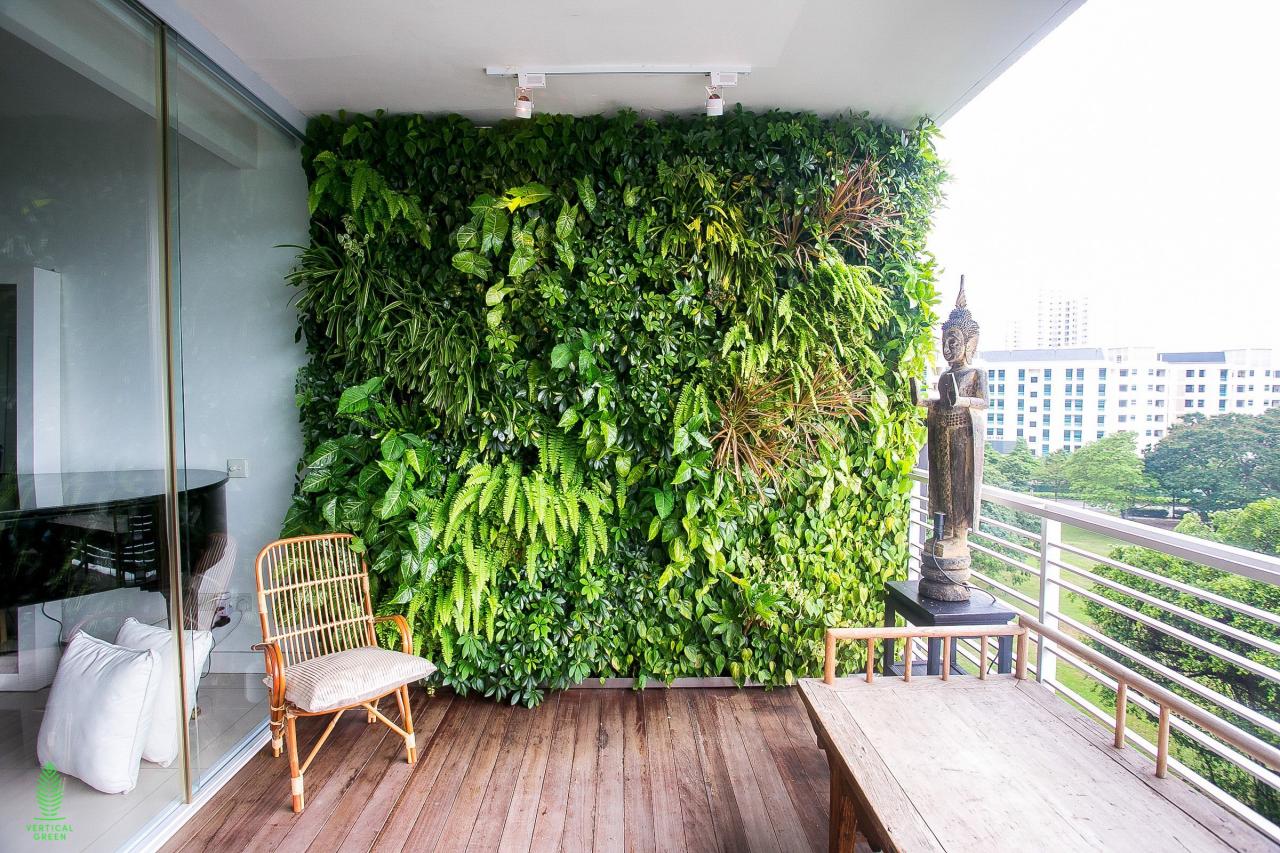
The advantages derived from integrating vertical gardens are extensive, impacting environmental health, human well-being, and economic viability, making them a truly holistic solution for urban challenges.
A. Environmental Benefits
A. Improved Air Quality: Plants act as natural biofilters, efficiently absorbing harmful pollutants (e.g., Volatile Organic Compounds (VOCs), particulate matter like dust and soot, nitrogen dioxide, carbon monoxide) and releasing oxygen through photosynthesis, significantly enhancing local and indoor air quality.
B. Mitigation of Urban Heat Island Effect: Green facades significantly reduce the amount of solar radiation absorbed by building surfaces and re-radiated into the urban environment. The evapotranspiration process from plants (release of water vapor) also provides a natural cooling effect, leading to a measurable reduction in ambient temperatures in city areas.
C. Stormwater Management: The specialized growing media and dense plant coverage absorb significant amounts of rainwater runoff, reducing the volume and velocity of water entering urban drainage systems. This helps prevent localized flooding during heavy rains and filters pollutants from the water before it enters waterways, helping to recharge groundwater.
D. Carbon Sequestration: Plants absorb CO2 from the atmosphere for photosynthesis, directly helping to mitigate greenhouse gas emissions and combat climate change. Large-scale vertical gardens can act as significant urban carbon sinks.
E. Enhanced Biodiversity: Vertical gardens, particularly when designed with a diverse array of native plant species, create new micro-habitats and ecological stepping stones for urban insects, pollinators (bees, butterflies), and birds, contributing significantly to urban biodiversity regeneration and ecological balance.
F. Noise Reduction: The dense foliage and growing media act as an effective natural acoustic barrier, absorbing and deflecting sound waves. This helps to reduce noise pollution from traffic, construction, and other urban activities, creating quieter, more peaceful indoor and outdoor environments.
B. Human Health and Well-being Benefits
A. Stress Reduction: Visual and sensory exposure to greenery is scientifically proven to lower physiological stress indicators, such as heart rate and blood pressure, and alleviate feelings of stress and anxiety, promoting a profound sense of calm and relaxation.
B. Improved Mood and Cognitive Function: Biophilic elements, including the sight of plants and the presence of natural light, enhance mood, increase concentration, improve attention span, and boost creativity, leading to higher overall psychological well-being and better cognitive performance.
C. Better Sleep: By regulating indoor temperatures, improving air quality through natural filtration, and potentially providing a more calming visual environment, vertical gardens can indirectly contribute to better sleep patterns and restorative rest.
C. Economic and Financial Benefits
A. Energy Savings: As natural insulators, living walls reduce a building’s energy consumption for heating (in winter) and cooling (in summer), leading to significant utility bill reductions for both residential and commercial properties.
B. Increased Property Value: Buildings and homes featuring prominent vertical gardens are perceived as more luxurious, sustainable, and aesthetically pleasing. This desirability often translates to higher market values, increased rental yields, and faster sales/leases in the competitive real estate market.
C. Extended Building Facade Life: The vegetation protects the building’s exterior from direct exposure to harsh UV radiation, extreme temperature fluctuations, and direct weathering (e.g., acid rain), potentially extending the lifespan of the facade materials and reducing maintenance costs.
D. Aesthetic and Social Benefits
A. Enhanced Aesthetics: Vertical gardens transform bland or unattractive walls into vibrant, dynamic, and visually stunning architectural features, significantly improving urban landscapes and making spaces more inviting and appealing.
B. Community Engagement: Publicly accessible vertical gardens can become focal points for community interaction, fostering a sense of shared green space, promoting environmental education, and encouraging social gathering.
C. Unique Identity: For homes, they offer a personalized, unique design element that distinguishes a property. For commercial buildings, they create a memorable and distinctive identity, making a strong statement about the organization’s values and vision.
Challenges and Considerations in Implementing Vertical Gardens
Despite their numerous benefits, the successful implementation and long-term maintenance of vertical gardens involve specific challenges that require careful planning, technical expertise, and ongoing commitment.
A. Initial Cost: The upfront cost of installing a professional, high-quality vertical garden system (including specialized structural support, advanced irrigation systems, and specific plant selections) can be significantly higher than traditional landscaping or facade treatments. This requires a strong initial investment, though often justified by long-term benefits.
B. Maintenance and Expertise: Living walls are complex ecosystems that require ongoing, specialized maintenance. This includes precise irrigation and nutrient feeding, regular pruning, vigilant pest and disease management, and occasional plant replacement. This often necessitates hiring skilled horticulturists, specialized landscape maintenance companies, or dedicated in-house staff.
C. Water Management and Drainage: Designing an efficient and reliable irrigation and drainage system is crucial. Improper design can lead to waterlogging of plants, inefficient water use, runoff issues, or, critically, water damage to the building structure. Recirculating systems, while highly water-efficient, add complexity to plumbing and filtration.
D. Weight Load: A fully hydrated vertical garden (plants, growing medium, and absorbed water) can be very heavy. A thorough structural assessment of the wall or facade is absolutely critical to ensure it can safely support the load, which may require additional structural reinforcement.
E. Plant Selection Challenges: Choosing the right plants that can thrive vertically, adapt to specific light and climate conditions (indoors vs. outdoors, sun vs. shade), and possess appropriate root systems is crucial for longevity. Plant mortality can occur if species are not correctly selected for the specific micro-environment of the wall.
Conclusion
The phenomenon of vertical gardens is far more than a passing architectural fancy; it represents a fundamental reawakening to the power of integrating nature into our built environments. By transforming static walls into dynamic, living ecosystems, these green installations offer profound solutions to the critical challenges of urbanization, climate change, and human well-being. As technology advances and our understanding of biophilia deepens, vertical gardens are poised to become an indispensable feature of future cities, leading a truly transformative green revival and cultivating healthier, more vibrant, and sustainable urban landscapes for generations to come.


